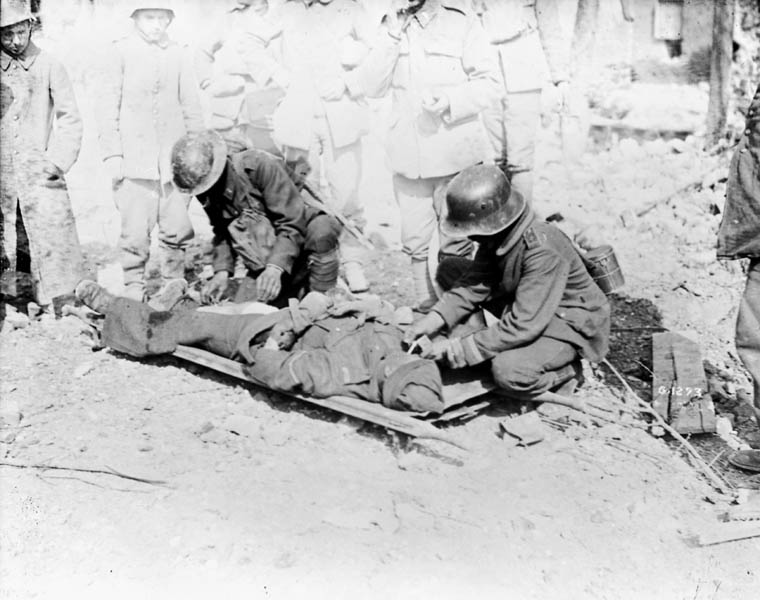Private Andrew Christian Stensig Anderson 437936, Mentioned in Douglas Haig’s Despatches, served with the 1st Battalion. More than sixty Danish men of the CEF gave their lives during the Great War. Son of Kristine Anderson (nee Wellew), of Amaliegade, 15, Aathus, Derunark. Born 29 October 1892, a farm labourer.
Enlistment of Private Andrew Christian Stensig Anderson
Enlistment of Private Andrew Christian Stensig Anderson enlisted 15 November 1915 in Edmonton, Alberta in the 51st Battalion. On the same day, Andrew applied for naturalization at the Supreme Court in Edmonton.

Private Andrew Christian Stensig Anderson stood 5′ 7″ tall, 140 pounds with fresh complexion, hazel eyes and dark brown hair. A Presbyterian.
51st Battalion
Organized in January 1915 initially under the command of Lieutenant-Colonel R de L Harwood. Mobilized at Edmonton, and also recruited in Edmonton. Sent drafts to England of 250 each in June and September 1915, 50 in December 1915, and also 200 to 46th Battalion. Embarked from Halifax 18 April 1916 aboard MISSANABIE, and later disembarked in England on 28 April 1916 with a strength of 37 officers, 1055 other ranks. 850 transferred to various units in England in June 1916, and also became 51st Casualty Battalion in June 1916. Redesignation as Garrison Duty Battalion on 13 November 1916 and continued as such until its disbandment on 22 June 1917.

Pte Anderson embarked Halifax on 18 April 1916aboard RMS MISSANABIE, later disembarking in Liverpool on 28 April 1916. Private Andrew Anderson proceeded overseas 5 May 1916 with the 1st Battalion.
1st Battalion
Organized at Valcartier Camp 2 September 1914, composed of recruits from Medical District 1 (Western Ontario), initially commanded by Lieutenant-Colonel F W Hill. Embarked from Quebec 25 September 1914 aboard LAURENTIC, and later disembarked in on England 14 October 1914 with a strength of 45 officers, 1121 other ranks. Arrived in France 11 February 1915 with the 1st Division, 1st Canadian Infantry Brigade, and later reinforced by the 4th Canadian Reserve Battalion.

Pte Andrew Anderson admitted No 1 Canadian Field Ambulance, 10 July 1916, Otitis Media (infection located in the middle ear), and later discharged on 18 July 1916.
Battle of Flers-Courcelette
The 1st Battalion avoided heavy casualties with front line officers moving their men to advanced saps and shell holes under intense bombardment at 4:48 pm on 9 September 1916. Later, during the night, the bombardment continued, and the men managed to consolidate positions with the 2nd Battalion.
Only sixteen men of the battalion killed during 9/10 September, with most of them buried at Sunken Road Cemetery, Contalmaison.
Private Andrew Christian Stensig Anderson Mentioned in Despatches ‘A’ List, 4 January 1917, London Gazette No 29890, 24 February 1917. Eight members of the unit recognized for services in the Somme offensive, including Lt Col G C Hodson, Major L H Nelles, Major L W Thomas, Captain W H Scott CAMC, S/Sgt Rushmer 7079, Sergeant W Barnes 401526, and also Corporal N B Levey 401059.
Battle of Arleux Loop (Capture of Fresnoy)
The 1st Battalion attacked and captured trenches to the north of Fresnoy. Total casualties for the tour, 3 officers and also 48 Other Ranks killed, including Captain W F Bradley and Private Andrew Christian Stensig Anderson on 3 May 1917. Andrew’s body not recovered, therefore his name listed on the Vimy Memorial.
Unable to locate Andrew’s mother in 1919, his Scroll sent to the Danish Consul General, 8 Byward St, Gt Tower St, London, England.
